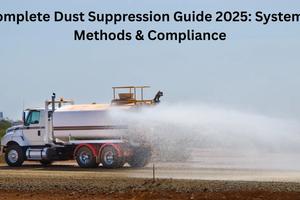How Drug Pricing Impacts Workers' Compensation Claims - Demystifying Drug Pricing in Workers Comp

Key Takeaways
Essential insights to remember
Prescription drugs typically account for 11-14% of workers' compensation medical costs, making them a substantial expense component.
Despite decreasing utilization in recent years, rising drug prices continue to impact overall workers' compensation claim costs.
Specialty medications, physician dispensing, and compounded drugs contribute significantly to higher pharmaceutical expenses in workers' comp.
Employers can mitigate drug pricing impacts through pharmacy benefit management programs, formularies, and clinical oversight.
Collaboration between employers, insurers, employees, and healthcare providers is essential for controlling prescription drug costs while ensuring quality care.
Understanding the Impact of Rising Drug Prices on Workers' Compensation
Rising prescription drug prices are placing substantial pressure on workers' compensation programs nationwide. While medical services represent the bulk of workers' compensation claims costs, prescription medications have emerged as a significant contributor to these expenses. According to the National Council on Compensation Insurance (NCCI), prescription drugs account for approximately 11-14% of workers' compensation medical costs—a figure that demands attention from employers and insurers alike.
🔍 What's particularly noteworthy is the divergence between price and utilization trends. While drug utilization has decreased in recent years, prices continue to climb at rates exceeding inflation. The U.S. House of Representatives Drug Pricing Investigation found that between 2016 and 2020, pharmaceutical companies raised prices on many branded prescription drugs by 36%—almost four times the inflation rate.
This price escalation creates a complex landscape for workers' compensation claims management. For employers, the implications are far-reaching:
- Premium increases: As medication costs rise, so do insurance premiums
- Benefit limitations: Insurers may exclude certain medications to control costs
- Administrative complexity: Navigating drug pricing and formularies adds layers of management
- Delayed recovery: Cost-related barriers may impede optimal treatment
Drug Price Trends in Workers' Compensation
The pharmaceutical market's pricing dynamics directly impact workers' compensation systems in ways that differ from group health insurance. Interestingly, workers' compensation has actually seen drug costs per claim decrease by approximately 24% since 2012, according to industry reports. This reduction isn't from price decreases but rather from improved utilization management and clinical oversight.
Key Drivers of Prescription Drug Costs in Workers' Compensation
Opioid Medications and Pain Management
Despite efforts to reduce their use, opioids remain among the most prescribed medications for workplace injuries. According to Express Scripts data, opioids account for 13 of the 25 most commonly dispensed medications for injured workers and represent the most expensive therapy class in workers' compensation, with an average cost of $391.35 per user annually.
The extensive use of opioids in workers' compensation claims creates several challenges:
- Extended disability duration: Research shows that injured workers with longer-term opioid prescriptions experience temporary disability three times longer than similar workers who don't receive opioids
- Dependency risks: Prolonged use increases the likelihood of addiction and dependency
- Side effect management: Additional medications may be needed to manage opioid side effects
- Delayed recovery: Pain management without functional improvement can prolong recovery
Many states have implemented regulations to control opioid prescribing patterns, including:
- Limitations on first-time prescriptions (5-7 days)
- Maximum morphine equivalent dosage (MED) restrictions
- Mandatory pain management treatment plans
- Weaning protocols for long-term users
Physician Dispensing Practices
When physicians dispense medications directly rather than sending patients to pharmacies, costs typically increase substantially. According to industry data, physician-dispensed drugs cost an average of $109.19 more than identical medications dispensed by pharmacies.
This price differential stems from repackaging practices:
- Repackaging companies purchase medications in bulk from manufacturers
- Medications are divided into smaller packages with new NDC codes
- New average wholesale prices (AWPs) are assigned—typically several times higher than original packaging
- Workers' compensation fee schedules, based on AWPs, then reimburse at these elevated rates
Several states have enacted legislation to curb physician dispensing costs, including:
- Colorado: Reimbursement for all prescription medications limited to AWP plus $4
- South Carolina: Prices capped at original manufacturer's AWP plus $5 dispensing fee
- Connecticut: Reimbursement limited to original manufacturer's AWP
However, implementation results have varied significantly by state, with different degrees of effectiveness in curbing this practice.
Compounded Medications
Compounded medications—custom-mixed drugs tailored to individual patients—represent another significant cost driver. While these medications may occasionally be medically necessary (for patients with allergies to standard medications, for example), they come with substantial price tags and lack FDA approval.
💊 According to Express Scripts data, the average cost per prescription for compounded medications is $1,966.92—dramatically higher than other therapy classes. For comparison, the next most expensive category (asthma medications) averages only $231.62 per prescription.
States have implemented various approaches to manage compound medication costs:
- Requiring ingredient-level billing
- Implementing fee schedule limitations
- Imposing caps on compounding pharmacy charges
- Requiring prior authorization for all compounds
Specialty Medications
Although specialty medications account for less than 1% of prescriptions in workers' compensation claims, they represent approximately 6% of total drug spending. These high-cost medications treat complex conditions like:
- Rheumatoid arthritis
- Cancer
- Hepatitis C
- HIV
- Complex pain conditions
The cost implications are substantial—for example, an antiviral medication used to treat hepatitis C can cost over $31,000 per prescription. Beyond the direct drug cost, specialty medications typically require:
- Special handling and storage
- Ongoing clinical monitoring
- Patient education and support services
- Administration assistance
Legislative and Regulatory Landscape
Federal Legislation Impact
Federal legislation has historically focused on reducing prescription drug costs for consumers in general healthcare settings, with limited direct focus on workers' compensation. Notable legislation includes:
- Hatch-Waxman Act (1984): Streamlined generic drug approvals, increasing competition
- Medicare Prescription Drug Improvement and Modernization Act (2003): Created Medicare Part D
- Inflation Reduction Act (2022): Allows Medicare to negotiate prices for certain drugs and requires manufacturer rebates when price increases exceed inflation
While these laws weren't designed specifically for workers' compensation, they indirectly influence the broader pharmaceutical market, potentially affecting workers' compensation drug pricing.
State-Level Regulations
State legislatures have been more active in addressing drug pricing issues, with approaches that directly impact workers' compensation:
- Drug formularies: Defining which medications are approved for workers' compensation cases
- Fee schedules: Setting maximum reimbursement rates for medications
- Utilization review: Requiring prior authorization for certain medications
- Pharmacy benefit management regulations: Governing how PBMs operate within the state
Many state laws specifically target PBM practices that impact pricing:
- Bans on spread pricing: Requiring PBMs to pass through actual costs to payers
- Minimum pharmacy payment requirements: Setting floors for reimbursement
- Rebate transparency: Requiring disclosure or pass-through of manufacturer rebates
- Network requirements: Limiting restrictions on pharmacy access
- Physician dispensing regulations: Setting parameters around physician dispensing practices
While these regulations aim to control costs, they sometimes create unintended consequences for workers' compensation systems that operate differently than group health insurance models.
Strategies for Managing Prescription Drug Costs
Pharmacy Benefit Management Programs
Pharmacy Benefit Managers (PBMs) serve as intermediaries between workers' compensation payers, healthcare providers, and pharmacies. Effective PBM programs can help control prescription drug costs through:
- Network management: Contracting with pharmacies at favorable rates
- Formulary design: Creating preferred medication lists based on efficacy and cost
- Utilization review: Ensuring appropriate medication use
- Clinical oversight: Involving pharmacists in medication reviews
- Fraud detection: Identifying inappropriate prescribing or dispensing patterns
Essential components of an effective pharmacy benefit management program include:
- Retail and mail-order options: Providing multiple access points for medications
- Generic conversion initiatives: Encouraging use of lower-cost alternatives
- Clinical management: Reviewing medication regimens for appropriateness
- Workers' compensation-specific formularies: Tailoring drug lists to injury types
- Utilization management: Analyzing prescribing patterns and trends
- Fraud, waste, and abuse detection: Identifying problematic patterns
Employee-Centric Approach
An employee-centric approach to workers' compensation claims management can help control prescription drug costs while improving outcomes. Key elements include:
- Clear communication: Educating employees about medication options and risks
- Substance abuse policies: Setting expectations around prescription medications
- Supervisor training: Preparing leadership to recognize potential issues
- Return-to-work programs: Facilitating faster recovery and reduced medication needs
⚠️ Targeted interventions for high-risk cases can be particularly effective. For example, direct outreach to injured workers after their first opioid prescription can provide education about potential side effects, addiction risks, and treatment alternatives.
Provider Behavior Management
Given that prescribers ultimately determine which medications are used, managing provider behavior is essential for controlling workers' compensation drug costs:
- Evidence-based guidelines: Promoting use of established medical treatment protocols
- Prescriber education: Offering information about appropriate medication selection
- Feedback mechanisms: Providing prescribers with data about their prescribing patterns
- Network management: Selecting providers with appropriate prescribing habits
Specific strategies include:
- Flagging risky opioid prescribing patterns for intervention
- Encouraging alternative pain management approaches including physical therapy and non-opioid medications
- Limiting physician dispensing through network controls and payment policies
- Requiring prior authorization for high-cost or high-risk medications
Vendor Selection and Oversight
The selection of claims administrators, PBMs, and medical management vendors plays a crucial role in controlling prescription drug costs. Effective vendor management includes:
- Regular performance reviews
- Custom reporting on key metrics
- Quarterly utilization analysis
- Network performance evaluation
Impact on Different Stakeholders
Employer Considerations
For employers, rising prescription drug costs in workers' compensation claims create several challenges:
- Budget predictability: Volatile drug prices make forecasting difficult
- Premium management: Higher claim costs lead to increased premiums
- Program design: Balancing cost control with employee care
- Regulatory compliance: Navigating complex state requirements
Employers should consider these proactive approaches:
- Review current health plans to ensure appropriate prescription drug coverage
- Develop pharmacy benefit management programs tailored to organizational needs
- Educate employees about generic medications and proper use of prescriptions
- Stay informed about industry trends to anticipate changes in drug pricing
- Advocate for beneficial legislative changes at state and federal levels
Insurance Carrier Response
Insurance carriers and third-party administrators (TPAs) have implemented various strategies to address rising prescription drug costs:
- In-house clinical resources: Employing nurses, physicians, and pharmacists to oversee medication management
- Holistic care models: Addressing behavioral health alongside physical recovery
- Predictive analytics: Identifying claims likely to involve high prescription costs
- Telehealth integration: Providing accessible care options
- Alternative pain management: Promoting non-pharmaceutical approaches
Many insurers are investing in proprietary programs aimed at controlling prescription drug costs while ensuring quality care. For example, AmTrust Financial has developed the AmCares® predictive nurse assignment model to proactively partner registered nurses with injured employees, resulting in reduced medical costs and improved outcomes.
Employee Impact and Support
For injured workers, prescription drug costs can impact:
- Treatment access: Availability of appropriate medications
- Recovery trajectory: Adequacy of pain management
- Return to work timeline: Effect of medication side effects on function
- Long-term health: Risks of dependency or complications
Support mechanisms should include:
- Education about medication options and potential side effects
- Behavioral health services to address psychological aspects of recovery
- Pain management alternatives including physical therapy and non-opioid approaches
- Clear communication about coverage and formulary restrictions
Future Trends and Considerations
Emerging Legislative Directions
The legislative landscape continues to evolve, with several trends likely to impact prescription drug pricing in workers' compensation:
- Increased PBM regulation: More states introducing transparency requirements
- Point-of-sale rebate requirements: Ensuring discounts benefit patients directly
- Price caps on specific medications: Limiting increases for essential drugs
- Importation programs: Allowing access to lower-cost medications from other countries
- Prescription Drug Affordability Boards: Creating state-level oversight entities
These legislative changes will require workers' compensation programs to remain adaptable and responsive.
Technology and Innovation
Technological advances are creating new opportunities for managing prescription drug costs:
- Artificial intelligence for identifying high-risk claims
- Mobile applications for medication adherence
- Telehealth platforms for more accessible care
- Electronic prescribing systems with built-in decision support
- Real-time benefit tools showing drug costs and alternatives
Balancing Cost Control with Quality Care
The ultimate challenge in managing prescription drug costs in workers' compensation is balancing financial objectives with quality care. Success requires:
- Collaboration between employers, insurers, healthcare providers, and employees
- Data-driven decision making based on outcomes and cost analysis
- Personalized treatment approaches that recognize individual needs
- Continuous evaluation of program effectiveness
Conclusion
Demystifying drug pricing in workers' compensation requires understanding multiple complex factors—from pharmaceutical industry pricing practices to state regulations, from clinical considerations to program design elements. While prescription drug costs present significant challenges for workers' compensation programs, effective management strategies can help control expenses while ensuring injured workers receive appropriate care.
By implementing comprehensive pharmacy benefit management programs, focusing on evidence-based treatments, selecting quality vendors, and adopting employee-centric approaches, employers and insurers can navigate the complex landscape of prescription drug pricing in workers' compensation claims.
The most successful programs will combine rigorous cost management with compassionate care—recognizing that the ultimate goal isn't simply reducing expenses but facilitating recovery and return to work for injured employees.





